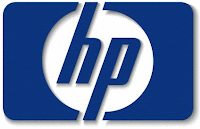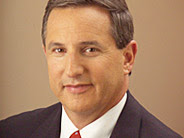They make up the common features of the Internet experience: instant NYSE updates, recommended news stories, supplemental videos along the side of your navigation bar.
Now taking a claim on these popular tech widgets is Microsoft's co-founder Paul Allen. He says he owns the intellectual property behind all these innovations, and he's demanding that some of the world's top Web companies pay it forward to use them.
Allen, a 57-year-old software mastermind, sued a sea of Silicon Valley companies on Friday. He targeted Internet giants such as Google Inc., Facebook Inc. and eBay Inc. based on having created their businesses around what he claims is his technology.
Paul Allen's legal action asserts that those three companies as well as eight others are utilizing patented technology developed over 10 years ago at his former Silicon Valley development center. The computer software pioneer did not actually develop any of the technology himself however owns the patents.
His Silicon Valley targets do not plan to go down so lightly. "This lawsuit against some of America's most innovative companies reflects an unfortunate trend of people trying to compete in the courtroom instead of the marketplace," a Google spokesman said.
Patent litigation as a whole is on the rise, in what is evolving into a lucrative endeavor. Ocean Tomo, a merchantile bank in Chicago that monitors the intellectual-property market, values the licensing market at up to $500 billion.
Allen's lawsuit comes at the heels of firms such as NTP Inc., which regulates and enforces non-tangible patents, and by many critics, have been coined "patent trolls". Courts have tried to make a presence in patent litigation, however with mixed results.
The four intellectual property patents addressed in the suit were created at Interval Research Corporation of Palo Alto, California. Allen financed the tech lab during the Internet bubble with roughly $100 million, however since a decade ago, the lab no longer exists.
Mr. Allen was unavailable for comment, according to spokesman David Postman, who said Mr. Allen's facility developed the technology that he claims to be his own. "We recognize that innovation has a value, and patents are the way to protect that," said Postman.
Mr. Postman also commented that the timing of the lawsuit was in no way related to the status of Allen's health or personal finance. Mr. Allen recently offered to donate the majority of his fortune. Last year, he was diagnosed with non-Hodgkin's lymphoma, but has successfully completed treatments and has no current problems.
"It sounds like the classic patent-troll case," said a Stanford Law School professor, who also has experience as a Nashville intellectual property. He mentioned that claims filed by owners of aged patents over technology, especially tech patents that are used so widespread, can be difficult to win.
Paul Allen's attorneys said a group has been reviewing his patent portfolio for years, evaluating what is relevant to the market while tightening the loose ends to complete the patent process. During that time, some of Mr. Allen's patents were sold or licensed.
Ron Laurie, a former intellectual property lawyer who now counsels businesses on patent licensing strategy, claimed Mr. Allen and the companies he owns have typically avoided the litigation process. "He's not been thought of as being in the troll community at all," said Mr. Laurie, who in the past has represented Mr. Allen in other concerns.
Legal professionals claim that an emergence in large settlements for patent holders in recent years have motivated owners to file infringement suits, rather than sell intellectual property, even when patents are several years old.
A perfect example occurred in July when NTP sued Microsoft, Apple Inc. and four other organizations over intellectual property patents involving the wireless transmission of email to PDAs and cellphones. Research In Motion Ltd., the maker of BlackBerry, paid NTP $612.5 million to settle the claim.
Nathan Myhrvold, former chief technology officer of Microsoft, has put a stamp on thousands of patents valued at over hundreds of millions of dollars. Mr. Myhrvold patents some of his inventions through his firm Intellectual Ventures in Seattle, but also invests in patents to license. A critical ingredient to successful patenting requires consulting with an experienced Nashville intellectual property law firm who can manage the legal complexities.
The companies named in Paul Allen's lawsuit are Google, Facebook, eBay, Apple, Yahoo Inc., AOL Inc., Netflix, Office Depot Inc., OfficeMax Inc., Staples Inc. and YouTube, a subsidiary of Google.
Noteworthy organizations not present in the defendants' list are Microsoft and Amazon.com Inc. Both companies Mr. Allen has personal and financial ties to. Mr. Postman denied comment on the list of defendants.
EBay said it was currently analyzing the claim and is planning an aggressive defense. "We believe this suit is completely without merit and we will fight it vigorously." a Facebook spokesman added.
Mr. Allen's lawsuit outlines violations of four IP patents for technology that are considered to be essential components of e-commerce and Internet search companies, in addition to being critical to the operations of the companies that use them.
One patent's technology enables a website to provide relevant suggestions to consumers for items related to what they currently have on their screen. The same technology allows social-networking websites to relate online activities and interests of its users.
A second key component involved in the dispute allows news readers to quickly pinpoint related stories to a particular topic. The other two patents enable ads, news updates or video images to flash on a user's computer screen, aside from their main activity.
Mr. Allen was the primary source of funds for Interval Research. During the companies prime, the facility employed over 110 professionals, "and was at the forefront in designing next-generation science and technology," the suit says. David Liddle, Interval Research's co-founder and a former Xerox Corp. researcher, could not be reached for comment.
The research pioneer was invested in a number of projects, with objectives to develop technology applicable to Mr. Allen's ventures in cable television and telecommunications. The company also focused on creating technology that could be licensed to investors and other companies.
According to Mr. Allen's lawsuit, in 1998 Interval Research was found listed in Google's "credits" site as an external collaborator and one of many sources of research funding for the founder's research that resulted in Google.com.
The creations of Interval Research extended from motion-detection technology used in video games to technology used for cellular voice-processing. The company dissolved shortly after its plans to commercialize its technology failed to resolve out as planned.



















